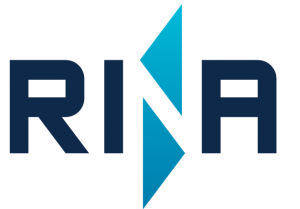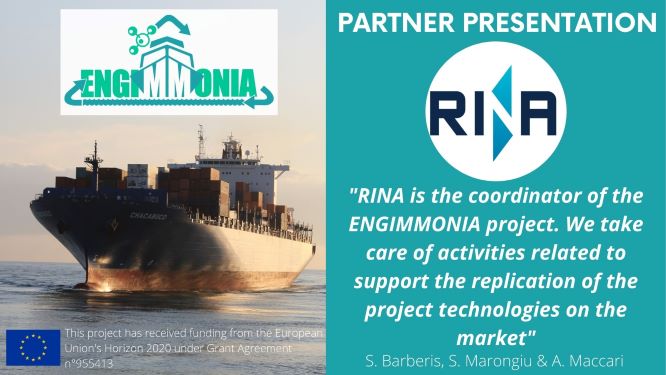interview to stefano barberis and stefania marongiu from RINA Consulting, and alessandro maccari from rina services
Tell us about RINA Consulting S.p.A. and RINA Services. What is your core business and role within the project?

SB-SM: RINA Consulting is a global engineering firm active in innovation and sustainability field for different sectors (energy, industry, space and defence, infrastructure etc.). We are the project coordinator and we take care of activities related to the support of the replication of ENGIMMONIA technologies on the market via health and safety, market and impact assessment activities. We also coordinate dissemination and exploitation activities.
AM: In the framework of ENGIMMONIA, RINA Services – as linked third party of RINA Consulting – will actively contribute to the qualification of the proposed solutions and technologies, targeting the progressive reduction of greenhous gas emissions and decarbonization of shipping. RINA team will assess the specific regulatory compliance of the clean energy technologies, the “marinization” and qualification of ship installations and finally their techno-economic effectiveness based upon the demo results. The applicable international regulatory framework requires further development and definition, and RINA will use the lessons learnt to propose amendments and improvement of rules, regulations and standards for new ships and retrofits.
Why did your organisation get involved in the ENGIMMONIA project? How does this activity fit with the normal business of your organisation?
SB-SM: We are strongly committed to support EU energy and shipping transition to clean technologies and we are pleased to participate to this project with many R&D and business partners.
AM: Environmental stewardship and sustainability are main pillars of RINA strategic plans, to promote a green approach to the Marine industry with a strong commitment to energy saving, emissions reductions and optimisation of fuel consumption. ENGIMMONIA scope of work is perfectly matching the key drivers of our Carbon Reduction Excellence Centre, aimed at ensuring this sustainability approach is reflected in the services we deliver to our clients. Moreover, RINA Services has a proven experience in helping its marine clients in developing new products and services, removing the barriers in the path towards the implementation of feasible and competitive solutions on the market.
How do you expect the maritime transport sector to be like in the future?
SB-SM: Low carbon fuels will be more and more present in EU shipping fleet also leveraging “terrestrial” energy transition and green/renewables driven fuels production.
AM: The path to the reduction of emissions and the decarbonization of waterborne transport is extremely challenging. It is evident that multiple solutions, alternatives, fuels and technologies will be needed to meet the ambitious international environmental targets, when business-as-usual approach to innovation is not enough. The project can be considered as a keystone of an “ammonia” revolution of the shipping sector aiming at reducing its emissions both in port and at sea, facilitating the use of ammonia and other clean energy solutions for a variety of targeted vessels towards widespread applications and easy integration on board.
Which are the most significant challenges and opportunities related to the use of ammonia/clean energy solutions in the maritime sector in your opinion?
SB-SM: The main challenges are related to volumes to be stored on-board (and where to locate them on-board) and regulatory aspects. Volume and weights are always fundamental aspects to be deeply evaluated on-board.
AM: Ammonia and hydrogen are carbon-free fuels, therefore highly strategic on the decarbonization path, however not adequately regulated by international or EU marine legislation. RINA issued its Rule amendments to include ammonia and hydrogen, thereby anticipating a possible future regulatory framework, to assist clients willing to start working on innovative ship design and installations.
What are your expectations of the ENGIMMONIA project?
ALL: The overall objective of ENGIMMONIA is to develop and test low-carbon solutions for vessels like:
- exhaust after treatment systems that can guaranteee low GWP emissions for ammonia dual fuel marine engines
- waste-heat recovery solutions for cooling and electricity production via ORC and adsorption chillers
- photovoltaic composite surfaces, applied to vessels’ structural parts, for electricity production
- energy management/operational optimization for minimising energy consumption and emissions
Different stakeholders will eventually take advantage (shipbuilders, owners, technology providers, legislators) and will be able to exploit ENGIMMONIA solutions. This will further strengthen the competence and excellence of RINA in sustainability, create new business opportunities and be an essential stepping-stone towards a comprehensive marine regulatory policy in cooperation with future international initiatives (IMO, EMSA, IACS).


